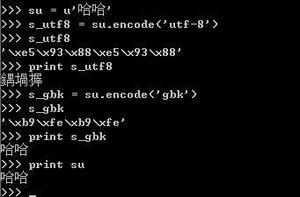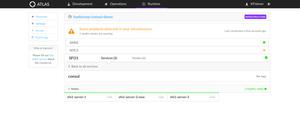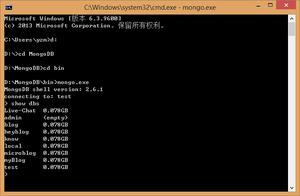Python装饰器学习(九步入门)

第一步:最简单的函数,准备附加额外功能
# -*- coding:gbk -*-
'''示例1: 最简单的函数,表示调用了两次'''
defmyfunc():
print("myfunc() called.")
myfunc()
myfunc()
第二步:使用装饰函数在函数执行前和执行后分别附加额外功能
# -*- coding:gbk -*-
'''示例2: 替换函数(装饰)
装饰函数的参数是被装饰的函数对象,返回原函数对象
装饰的实质语句: myfunc = deco(myfunc)'''
defdeco(func):
print("before myfunc() called.")
func()
print(" after myfunc() called.")
returnfunc
defmyfunc():
print(" myfunc() called.")
myfunc =deco(myfunc)
myfunc()
myfunc()
第三步:使用语法糖@来装饰函数
# -*- coding:gbk -*-
'''示例3: 使用语法糖@来装饰函数,相当于“myfunc = deco(myfunc)”
但发现新函数只在第一次被调用,且原函数多调用了一次'''
defdeco(func):
print("before myfunc() called.")
func()
print(" after myfunc() called.")
returnfunc
@deco
defmyfunc():
print(" myfunc() called.")
myfunc()
myfunc()
第四步:使用内嵌包装函数来确保每次新函数都被调用
# -*- coding:gbk -*-
'''示例4: 使用内嵌包装函数来确保每次新函数都被调用,
内嵌包装函数的形参和返回值与原函数相同,装饰函数返回内嵌包装函数对象'''
defdeco(func):
def_deco():
print("before myfunc() called.")
func()
print(" after myfunc() called.")
# 不需要返回func,实际上应返回原函数的返回值
return_deco
@deco
defmyfunc():
print(" myfunc() called.")
return'ok'
myfunc()
myfunc()
第五步:对带参数的函数进行装饰
# -*- coding:gbk -*-
'''示例5: 对带参数的函数进行装饰,
内嵌包装函数的形参和返回值与原函数相同,装饰函数返回内嵌包装函数对象'''
defdeco(func):
def_deco(a, b):
print("before myfunc() called.")
ret =func(a, b)
print(" after myfunc() called. result: %s"%ret)
returnret
return_deco
@deco
defmyfunc(a, b):
print(" myfunc(%s,%s) called."%(a, b))
returna +b
myfunc(1, 2)
myfunc(3, 4)
第六步:对参数数量不确定的函数进行装饰
# -*- coding:gbk -*-
'''示例6: 对参数数量不确定的函数进行装饰,
参数用(*args, **kwargs),自动适应变参和命名参数'''
defdeco(func):
def_deco(*args, **kwargs):
print("before %s called."%func.__name__)
ret =func(*args, **kwargs)
print(" after %s called. result: %s"%(func.__name__, ret))
returnret
return_deco
@deco
defmyfunc(a, b):
print(" myfunc(%s,%s) called."%(a, b))
returna+b
@deco
defmyfunc2(a, b, c):
print(" myfunc2(%s,%s,%s) called."%(a, b, c))
returna+b+c
myfunc(1, 2)
myfunc(3, 4)
myfunc2(1, 2, 3)
myfunc2(3, 4, 5)
第七步:让装饰器带参数
# -*- coding:gbk -*-
'''示例7: 在示例4的基础上,让装饰器带参数,
和上一示例相比在外层多了一层包装。
装饰函数名实际上应更有意义些'''
defdeco(arg):
def_deco(func):
def__deco():
print("before %s called [%s]."%(func.__name__, arg))
func()
print(" after %s called [%s]."%(func.__name__, arg))
return__deco
return_deco
@deco("mymodule")
defmyfunc():
print(" myfunc() called.")
@deco("module2")
defmyfunc2():
print(" myfunc2() called.")
myfunc()
myfunc2()
第八步:让装饰器带 类 参数
# -*- coding:gbk -*-
'''示例8: 装饰器带类参数'''
classlocker:
def__init__(self):
print("locker.__init__() should be not called.")
@staticmethod
defacquire():
print("locker.acquire() called.(这是静态方法)")
@staticmethod
defrelease():
print(" locker.release() called.(不需要对象实例)")
defdeco(cls):
'''cls 必须实现acquire和release静态方法'''
def_deco(func):
def__deco():
print("before %s called [%s]."%(func.__name__, cls))
cls.acquire()
try:
returnfunc()
finally:
cls.release()
return__deco
return_deco
@deco(locker)
defmyfunc():
print(" myfunc() called.")
myfunc()
myfunc()
第九步:装饰器带类参数,并分拆公共类到其他py文件中,同时演示了对一个函数应用多个装饰器
# -*- coding:gbk -*-
'''mylocker.py: 公共类 for 示例9.py'''
classmylocker:
def__init__(self):
print("mylocker.__init__() called.")
@staticmethod
defacquire():
print("mylocker.acquire() called.")
@staticmethod
defunlock():
print(" mylocker.unlock() called.")
classlockerex(mylocker):
@staticmethod
defacquire():
print("lockerex.acquire() called.")
@staticmethod
defunlock():
print(" lockerex.unlock() called.")
deflockhelper(cls):
'''cls 必须实现acquire和release静态方法'''
def_deco(func):
def__deco(*args, **kwargs):
print("before %s called."%func.__name__)
cls.acquire()
try:
returnfunc(*args, **kwargs)
finally:
cls.unlock()
return__deco
return_deco
# -*- coding:gbk -*-
'''示例9: 装饰器带类参数,并分拆公共类到其他py文件中
同时演示了对一个函数应用多个装饰器'''
frommylocker import*
classexample:
@lockhelper(mylocker)
defmyfunc(self):
print(" myfunc() called.")
@lockhelper(mylocker)
@lockhelper(lockerex)
defmyfunc2(self, a, b):
print(" myfunc2() called.")
returna +b
if__name__=="__main__":
a =example()
a.myfunc()
print(a.myfunc())
print(a.myfunc2(1, 2))
print(a.myfunc2(3, 4))
以上是 Python装饰器学习(九步入门) 的全部内容, 来源链接: utcz.com/z/389359.html









